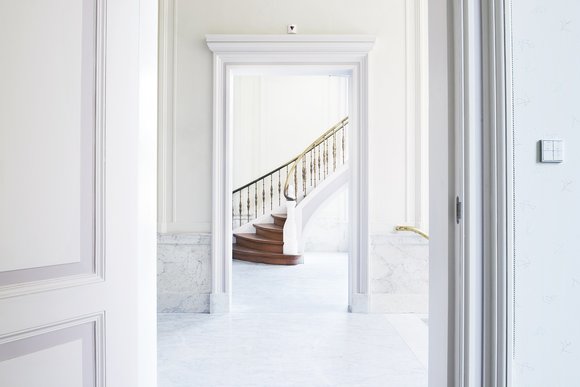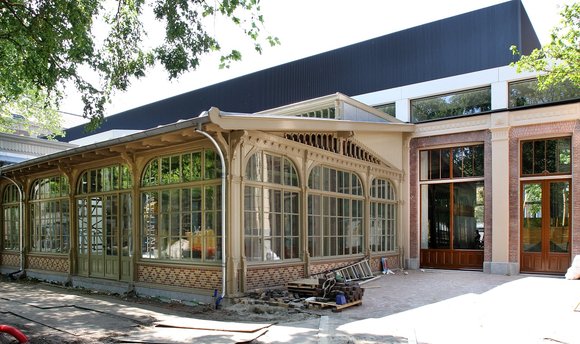The architects from the Sprenger von der Lippe practice in Hamburg were, from the very early stages, involved in the development of Micropia and the restoration of the Ledenlokalen. Restoration plans had to deal with the effects of the attack of 27 March 1943, when the wartime resistance bombed the Municipal Register which was housed in the Members’ Rooms during the Nazi occupation.
Architect Richard Sprenger saw this as an opportunity rather than a problem. The hole blasted in the building by the explosion became part of the architectural concept.

The new design of de Ledenlokalen has the same grid and structure as the original building and the space feels the same as in the 19th century. The new architecture remains restrained, allowing the historical sections to be properly appreciated. Sprenger: “The new shouldn’t compete with the old”.
The ‘black box’ housing part of Micropia is the most eye-catching of the new additions to the building, which now has three layers. The first layer is the historical part, with its fine delicate lines. The nearer you get to the modern part, the more restrained the lines become. The second layer is the cornice, already more abstract and restrained. The third layer is the minimalist black box. Sprenger thinks that an architect cannot get more abstract than this. The black box is the neutral background against which the rest of the building is allowed to shine. He has ensured that, if you look at it from Artisplein, the historical conservatory is shown off even more beautifully. Sprenger: “It’s just like when you see a beautiful butterfly in a meadow full of flowers. It’s beautiful, but you only really see just how beautiful it is when you put it against a black background.”

The building material for the black box was also an important architectural consideration. Seamless, black aluminium was chosen because it had to be as neutral and elegant as possible. The ribbed structure has a velvety feel. Subtle changes in colour can be glimpsed when the sun shines.
Natura Artis Magistra decided that the surviving 19th-century architecture and interiors of de Ledenlokalen should be restored, with adjustments where necessary to allow them to be used in a new way. The design is restrained to do justice to the building’s historical character. Architect Kees Doornenbal of the Rappange practice in Amsterdam advised on the monumental aspect of the building. Studio Linse Amsterdam was responsible for the interior decoration of the spaces. The restoration of de Ledenlokalen and the plans for its updated use were carried out in close collaboration between Artis Project Management and the Cultural Heritage Agency of the Netherlands (Rijksdienst voor het Cultureel Erfgoed), City of Amsterdam Office for Monuments and Archaeology (Bureau Monumenten en Archeologie van de gemeente Amsterdam) and its Building Aesthetics Committee (commissie Welstand).
